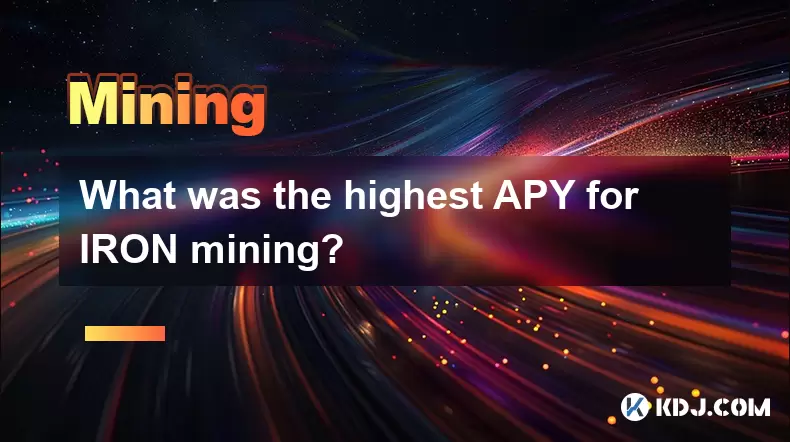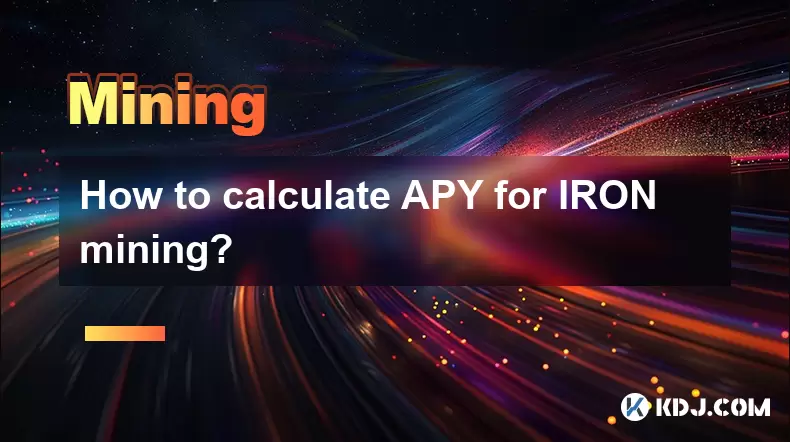-
 Bitcoin
Bitcoin $114500
-0.31% -
 Ethereum
Ethereum $3648
1.11% -
 XRP
XRP $3.033
-0.27% -
 Tether USDt
Tether USDt $0.9999
-0.01% -
 BNB
BNB $758.5
-0.32% -
 Solana
Solana $167.5
1.48% -
 USDC
USDC $0.9998
-0.02% -
 TRON
TRON $0.3331
0.74% -
 Dogecoin
Dogecoin $0.2039
0.25% -
 Cardano
Cardano $0.7419
-0.46% -
 Hyperliquid
Hyperliquid $39.21
2.66% -
 Stellar
Stellar $0.4049
-1.95% -
 Sui
Sui $3.483
-0.56% -
 Bitcoin Cash
Bitcoin Cash $570.8
2.89% -
 Chainlink
Chainlink $16.67
-0.57% -
 Hedera
Hedera $0.2470
-1.57% -
 Ethena USDe
Ethena USDe $1.001
0.00% -
 Avalanche
Avalanche $22.36
1.52% -
 Litecoin
Litecoin $123.4
4.35% -
 UNUS SED LEO
UNUS SED LEO $8.989
0.09% -
 Toncoin
Toncoin $3.324
-2.40% -
 Shiba Inu
Shiba Inu $0.00001219
-1.30% -
 Uniswap
Uniswap $9.811
2.54% -
 Polkadot
Polkadot $3.662
-0.07% -
 Monero
Monero $295.5
-3.85% -
 Dai
Dai $1.000
0.01% -
 Bitget Token
Bitget Token $4.345
0.24% -
 Cronos
Cronos $0.1380
0.95% -
 Pepe
Pepe $0.00001044
-1.14% -
 Ethena
Ethena $0.5981
-4.24%
What impact does the "graphic memory frequency" in graphics card mining have on mining?
Higher GPU memory frequency boosts mining hashrate, but overclocking requires caution to avoid instability and damage. Optimal settings vary by GPU and algorithm.
Mar 27, 2025 at 09:21 am

The Crucial Role of Graphics Memory Frequency in Cryptocurrency Mining
Graphics card mining, particularly for memory-intensive algorithms like Ethereum (before the merge) and several other altcoins, relies heavily on the speed and efficiency of the GPU's memory. The graphic memory frequency, measured in MHz (megahertz), directly impacts the hashrate, which is the measure of your mining power and ultimately, your profitability. A higher memory frequency generally translates to a higher hashrate, allowing you to solve more cryptographic puzzles and earn more cryptocurrency. However, it's not the only factor.
The relationship between memory frequency and hashrate isn't always linear. Different algorithms and mining software react differently to memory clock adjustments. Overclocking your memory frequency too aggressively can lead to instability, errors, and even hardware damage. Finding the optimal memory frequency for your specific GPU and mining setup requires careful experimentation and monitoring.
Overclocking your GPU's memory involves increasing its operating frequency beyond the manufacturer's specifications. This can be achieved using software like MSI Afterburner or similar tools. However, proceed with caution. Incorrect overclocking can lead to instability and even damage your graphics card.
To safely overclock your GPU memory:
- Start with small increments. Increase the frequency by a modest amount (e.g., 50-100MHz) and monitor for stability.
- Use monitoring software to check temperatures and voltages. High temperatures can damage your GPU.
- Stress test your GPU after each overclocking step using a dedicated tool.
- Gradually increase the frequency until you find the highest stable setting. This is the sweet spot where you maximize hashrate without compromising stability.
- Remember to save your settings once you've found a stable overclock.
The impact of memory frequency varies depending on the specific cryptocurrency being mined. Algorithms with higher memory requirements, like those used in some older altcoins, benefit more significantly from higher memory frequencies. Conversely, algorithms less reliant on memory might show a smaller increase in hashrate with memory overclocking.
Different GPUs have different memory bandwidth and overclocking potential. High-end GPUs with faster memory often have more headroom for overclocking, leading to larger hashrate increases compared to budget cards. The memory type (e.g., GDDR6, GDDR6X) also plays a significant role; newer generations generally offer better performance and overclocking potential.
Memory timing (latency) also plays a crucial role, although often overlooked. While frequency determines how many data transfers happen per second, timing determines how efficiently those transfers occur. Lower latency values are preferable, contributing to improved performance. Adjusting memory timings (often referred to as "timings" or "latencies") can further optimize performance but requires more advanced knowledge and careful tuning.
Mining profitability is directly linked to the hashrate, which is influenced by memory frequency. A higher hashrate translates to a higher chance of solving cryptographic puzzles and earning more cryptocurrency. However, remember that electricity costs and the cryptocurrency's value also play a significant role in determining overall profitability. A higher hashrate may not always mean higher profits if electricity costs are high or the cryptocurrency's value drops.
The use of specialized mining software is essential for maximizing the impact of memory frequency on mining performance. These programs are designed to optimize the GPU's workload and communication with the mining pool, allowing for efficient utilization of the increased memory speed. Different miners might have different levels of support for memory overclocking, so choosing the right software is crucial.
Maintaining optimal temperatures is crucial for both stability and longevity. High temperatures can significantly reduce the lifespan of your GPU and lead to instability, rendering your overclocking efforts ineffective. Employ adequate cooling solutions, such as efficient case fans, dedicated GPU coolers, and potentially undervolting (reducing voltage to lower temperatures), to ensure your GPU operates within safe temperature ranges.
Undervolting, the process of reducing the voltage supplied to the GPU, can be combined with overclocking to improve efficiency and reduce heat. By lowering the voltage, you can often maintain a stable overclock at lower temperatures, leading to longer GPU lifespan and potentially lower energy consumption. However, undervolting requires careful monitoring to avoid instability.
Different mining pools offer varying levels of efficiency and rewards. Choosing a reputable and efficient mining pool can significantly impact your overall mining profitability, regardless of your GPU's memory frequency. Factors like pool fees, payout methods, and server latency should be considered when selecting a mining pool.
Frequently Asked Questions
Q: Can I overclock my GPU memory without any risk?
A: No, overclocking always carries a risk of instability or even hardware damage. Proceed with caution and carefully monitor your GPU's temperature and stability during the process.
Q: What happens if I overclock my GPU memory too much?
A: Overclocking beyond the stable limit can lead to instability, crashes, artifacts on the screen, and potentially permanent damage to your GPU.
Q: Does higher memory frequency always mean higher mining profitability?
A: Not necessarily. Profitability also depends on factors like electricity costs, cryptocurrency value, and mining pool efficiency. A higher hashrate due to higher memory frequency contributes to profitability but is not the sole determining factor.
Q: What software can I use to monitor my GPU's temperature and frequency during mining?
A: Popular options include MSI Afterburner, HWMonitor, and GPU-Z. These tools provide real-time monitoring of various GPU parameters, including temperature, frequency, and voltage.
Q: What is the best memory frequency for mining?
A: There's no single "best" frequency. The optimal frequency depends on your specific GPU, cooling solution, and the mining algorithm used. You need to find the highest stable frequency through experimentation.
Q: How do memory timings affect mining performance?
A: Lower memory timings (latencies) generally improve performance, even at the same frequency. Optimizing timings can further enhance hashrate, but it's a more advanced process.
Q: Is undervolting necessary when overclocking GPU memory?
A: Undervolting is not strictly necessary but can help to reduce temperatures and improve stability, especially when pushing the memory frequency to its limits. It's a useful technique to extend the lifespan of your GPU.
Disclaimer:info@kdj.com
The information provided is not trading advice. kdj.com does not assume any responsibility for any investments made based on the information provided in this article. Cryptocurrencies are highly volatile and it is highly recommended that you invest with caution after thorough research!
If you believe that the content used on this website infringes your copyright, please contact us immediately (info@kdj.com) and we will delete it promptly.
- XRP, DOGE, and the Altcoin Darling Dilemma: Where's the Alpha?
- 2025-08-06 08:30:11
- Beatrix Potter 50p Coins on eBay: A Collector's Guide to Value and Rarity
- 2025-08-06 08:50:12
- Dogecoin Price Outlook 2025: Barking Up the Right Tree?
- 2025-08-06 08:35:17
- Floki Price Super Cycle Watch: Key Support Holds, Will the Viking Dog Fly?
- 2025-08-06 08:50:12
- Executive Order vs. Financial Institutions: Is Political Bias the New Normal?
- 2025-08-06 08:55:11
- China, DeepSeek AI, and Crypto Prices: Decoding the Future of XRP, SHIB, and PEPE
- 2025-08-06 09:00:13
Related knowledge

What was the highest APY for IRON mining?
Jul 23,2025 at 05:14am
Understanding IRON Token and Its Mining MechanismThe IRON token is a stablecoin that operates within the Iron Finance ecosystem, primarily on blockcha...

What is impermanent loss in IRON pools?
Jul 23,2025 at 09:00am
Understanding Impermanent Loss in the Context of IRON PoolsImpermanent loss is a phenomenon that affects liquidity providers in decentralized finance ...

How to claim rewards from IRON mining?
Jul 23,2025 at 02:21pm
Understanding IRON Mining and Reward MechanismsIRON Finance operated as a decentralized finance (DeFi) protocol on the Polygon and Binance Smart Chain...

How to claim rewards from IRON mining?
Jul 29,2025 at 05:07am
Understanding IRON Mining and Reward MechanismIRON is a dual-token system designed to stabilize the value of a synthetic asset through a combination o...

IRON mining tutorial for beginners
Jul 27,2025 at 12:01am
What Is IRON and How Does It Work in the Cryptocurrency Ecosystem?IRON is a cryptocurrency token that operates on the Binance Smart Chain (BSC) and is...

How to calculate APY for IRON mining?
Jul 28,2025 at 09:49am
Understanding APY in the Context of IRON Token MiningWhen engaging in IRON token mining within decentralized finance (DeFi) platforms, Annual Percenta...

What was the highest APY for IRON mining?
Jul 23,2025 at 05:14am
Understanding IRON Token and Its Mining MechanismThe IRON token is a stablecoin that operates within the Iron Finance ecosystem, primarily on blockcha...

What is impermanent loss in IRON pools?
Jul 23,2025 at 09:00am
Understanding Impermanent Loss in the Context of IRON PoolsImpermanent loss is a phenomenon that affects liquidity providers in decentralized finance ...

How to claim rewards from IRON mining?
Jul 23,2025 at 02:21pm
Understanding IRON Mining and Reward MechanismsIRON Finance operated as a decentralized finance (DeFi) protocol on the Polygon and Binance Smart Chain...

How to claim rewards from IRON mining?
Jul 29,2025 at 05:07am
Understanding IRON Mining and Reward MechanismIRON is a dual-token system designed to stabilize the value of a synthetic asset through a combination o...

IRON mining tutorial for beginners
Jul 27,2025 at 12:01am
What Is IRON and How Does It Work in the Cryptocurrency Ecosystem?IRON is a cryptocurrency token that operates on the Binance Smart Chain (BSC) and is...

How to calculate APY for IRON mining?
Jul 28,2025 at 09:49am
Understanding APY in the Context of IRON Token MiningWhen engaging in IRON token mining within decentralized finance (DeFi) platforms, Annual Percenta...
See all articles

























































































